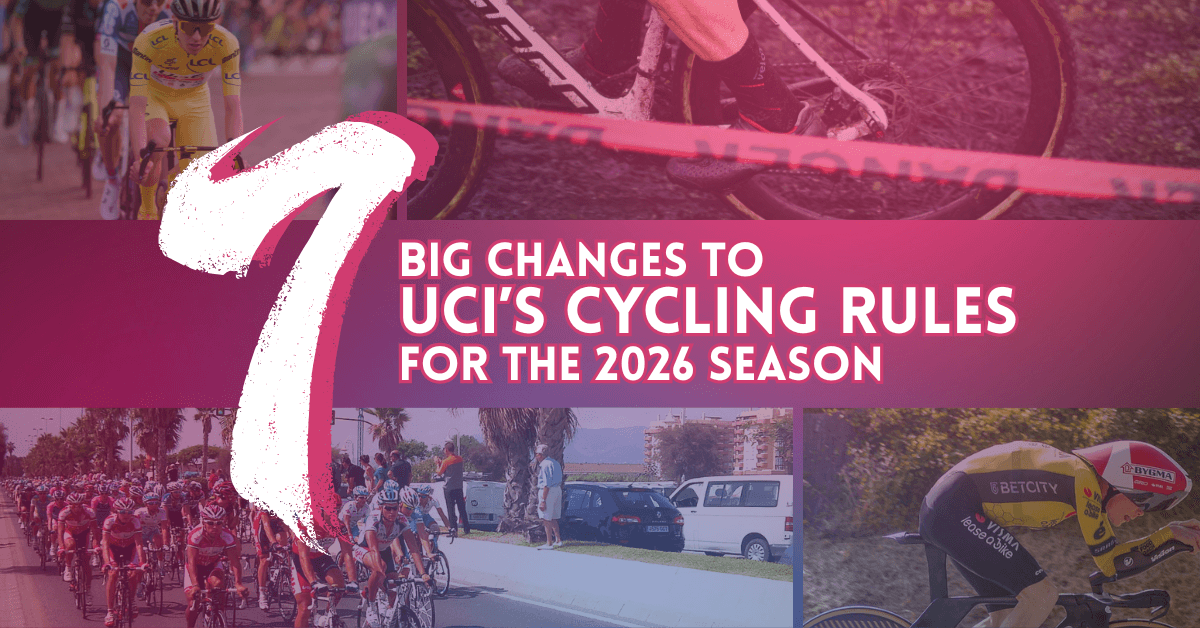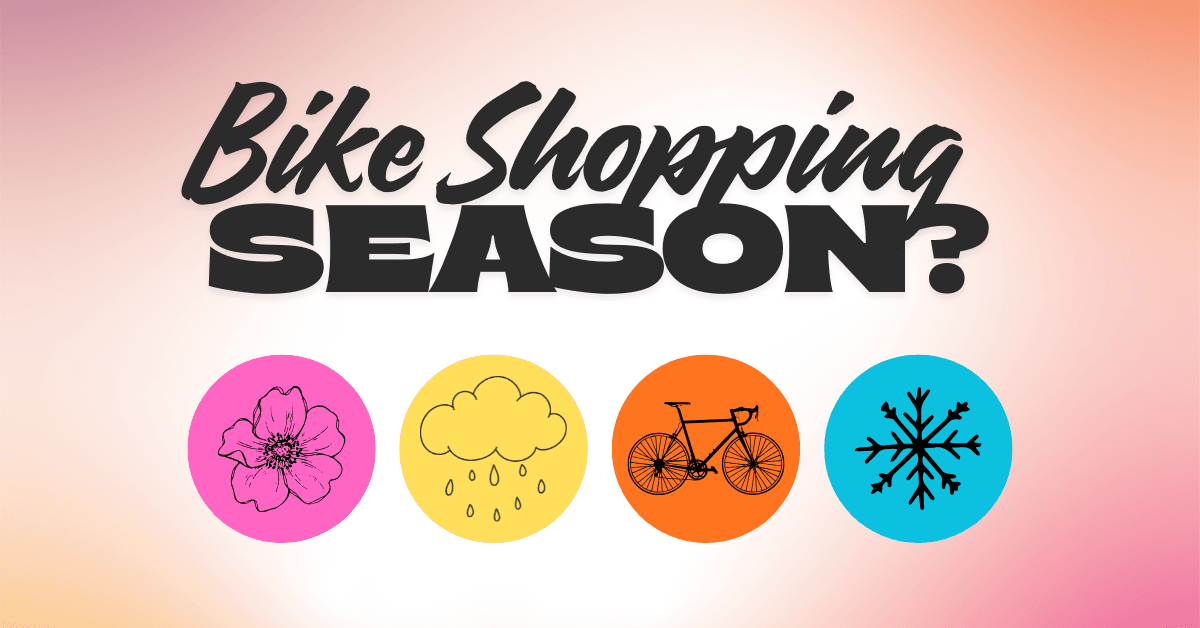Do you love to take your bike out on a hot summer’s day? Well, no matter how much you enjoy the sunshine, your body might not enjoy it quite as much.
For pro cyclists riding in the heat of summer, learning to cope with high temperatures is part of the job. Let’s learn more about how the heat affects racing… and how the riders stay cool!

Too hot to handle?
How do amateur cyclists handle the hottest weather of the summer? For most, the answer is simple: don’t go outside! Or at least limit rides to cooler times of the day, like early morning.
For most pro cyclists, that’s a luxury. The riders themselves don’t have a say in when the race starts. For the Tour de France, most stages start around noon and can last until 5pm or later. That means that the peloton must be out riding during what’s usually the hottest time of the day, around 3pm!
How hot do races get?
The hottest races on the pro cycling calendar take place in the middle of summer. At the Tour de France, temperatures typically fall in the high 20s Celcius, but can get much hotter as well. Each of last few Tour de Frances has faced a heat wave at some point in the race. It’s important to note that the heat is typically most oppressive outside of the mountains; higher altitudes can help to keep riders cool, with some even putting on a jacket at the finish of a high mountain stage.
Last year’s Vuelta a España was notably hot. On Stage 4, the temperature got up to 40 degrees Celsius — that’s around 104 degrees Fahrenheit, well above the temperature of the human body!
Embed from Getty ImagesPushing through the pain.
The big issue with excessive heat is the body’s need to handle it. When exposed to higher temperatures, your body ramps up mechanisms to keep you cooler. This ensures that your core retains an appropriate temperature for your internal organs to function, a process called homeostasis.
And the heat is much more difficult for the body to handle than the cold. That’s because it’s easy for your body to warm itself up through movement or metabolic changes… it’s much more difficult to ward off the heat coming from the outside!
We all know some of the signs of our bodies getting overheated, like sweating or fatigue. When we don’t heed these warning signs, we might notice other feelings like dizziness or muscle cramping, precursors to more severe heat exhaustion. All of these things might encourage us to stop what we’re doing (like riding our bike) and seek out a cold drink or air conditioning.
But for those riding in a pro race, it’s not so simple! Instead, they have to push through the heat, and find ways to mitigate it, so that they can keep racing for the win.
How do they do that?
Time to chill: the pro cyclist tricks to beat the heat.
As you can imagine, the pros are very conscious of hot weather, and so are their teams. The last thing a DS wants to see is their rider abandoning the race due to heat exhaustion. Working together, they try everything to beat the heat.
What are some of the top strategies pro cyclists use to stay cool?
Embed from Getty ImagesIce
Have you seen some of the riders wearing ice vests at the start line or finish of a race? These pieces of gear look a bit funny, but they’re actually extremely helpful for beating the heat. Because they target the core of the body, they help to cool the blood down quickly and circulate throughout the body.
What about during the race? Many riders will use an ice bag under their jersey to stay cool while riding, too. These ice bags are made of thin material so they don’t add excess weight; for example, some teams seem to make ice bags out of panty hose material. Once the ice melts, the riders dispose of the used bag at the team car or in the trash zone.
A cold bath
A lot of riders take the ice thing a step further by taking an ice bath after the finish. This sounds crazy, but after a hot day on the bike, it can be enjoyable too!
What the big idea behind a stint in the tub of ice? Well, the research on the benefits of ice baths is mixed. Conceptually, it should help to reduce inflammation and help with recovery. However, studies have shown that exposure to ice water can also delay muscle repair, and that the bath doesn’t have much effect on training.
Speaking of training, most riders prefer to train in the heat to ensure that they are adapted to riding in hot weather. This “heat training” can take place weeks in advance of a hot race like the Tour de France, making sure that the riders are physiologically adapted before the big event.
Embed from Getty ImagesHydration
For the pros, the best place to prevent heat exhaustion is obviously during the race itself. For this, hydration is absolutely key.
When dehydration sets in, blood thickens and becomes harder for the heart to pump. For cyclists, this obviously makes it harder to keep up with the endurance efforts needed for a five-hour (or more!) race. Plus, cold water or sports drinks go straight to the core, helping to cool down the body too. Some teams give their riders frozen gels for this purpose as well, sort of like a popsicle!
Team cars are often outfitted with coolers or cooling systems to ensure that riders have a supply of cold drinks throughout the entire day. Typically, a rider will consume around a liter of water per hour while racing!
Salts and electrolytes
When you sweat, your body loses important electrolytes, like sodium or magnesium. Have you ever seen a pro with dried white stuff on their bib shorts? That’s actually the salt condensing on their kit!
These salts help your body maintain its fluid balance. For all kinds of athletes including cyclists, it’s critical not just to drink water to stay hydrated in the heat, but also to take in electrolytes. Energy drinks, sports drinks, gels, or powdered electrolyte mix can all be sources of electrolytes that pro cyclists will consume during a day on the bike.
Did you know that the pros actually have a very regimented drinking schedule when it comes to electrolytes, too? Whether the team car should be handing out a bottle with water or electrolyte mix can be personalized to each specific rider based on their fueling needs through the race.
Embed from Getty ImagesCan amateurs use the same strategies as the pros to stay cool?
If you’ve ever been out on a ride when the day started to heat up, you might have wished a team car would bring you a cold drink! But how can amateurs use some of the same strategies as pro riders to keep cool while riding?
The most important factor is hydration. Make sure you have a reliable source of electrolytes while on a long ride; with experience, you can optimize when it’s best to consume them just like the pros do. For example, you might find you feel better and have more endurance when you start out drinking water and then move to something like electrolyte drink mix.
You might also want to optimize the electrolytes for your body. You prepare your own electrolyte drink mix using ingredients from the grocery or health food store. Check out this recipe to learn more.
Got your cooler? You can stay cool with ice, too.
What about ice? Try making your own ice bag like the pros do for a hot day! Take a pair of panty hose or tights, and cut each leg into multiple segments. Add some ice into each segment and tie off as needed to create packets of ice. You can store these in a cooler until you’d like to use them to cool down. These types of ice bags are a common sight at amateur races taking place on hot days.
Remember that your core temperature is the most important part of maintaining your body’s homeostasis. While it might feel good to cool down your limbs, try to focus on cooling the core of your body. A super cold drink can help just as well as using an ice bag on your chest or back, like a makeshift ice vest.
Whatever the case, stay safe when riding on hot days by staying cool! Heat exhaustion is no joke.
Embed from Getty ImagesPros know how to handle the hot temps.
While the temperatures at the hottest summer races can be intimidating, one thing’s for certain: the pros know how to deal with a hot day on the bike. Using ice, staying hydrated, and even training in the heat to adapt are all parts of a pro’s regimen for preparing for hot weather racing. And even amateurs can take advantage of some of these strategies to stay cool. Armed with the tools to ward away heat exhaustion, I hope you now feel inspired to take your bike out for a spin even on a warm day!
What do you think of the pros’ heat-beating strategies? Let us know in the comments or on social media! ★










Leave a Reply